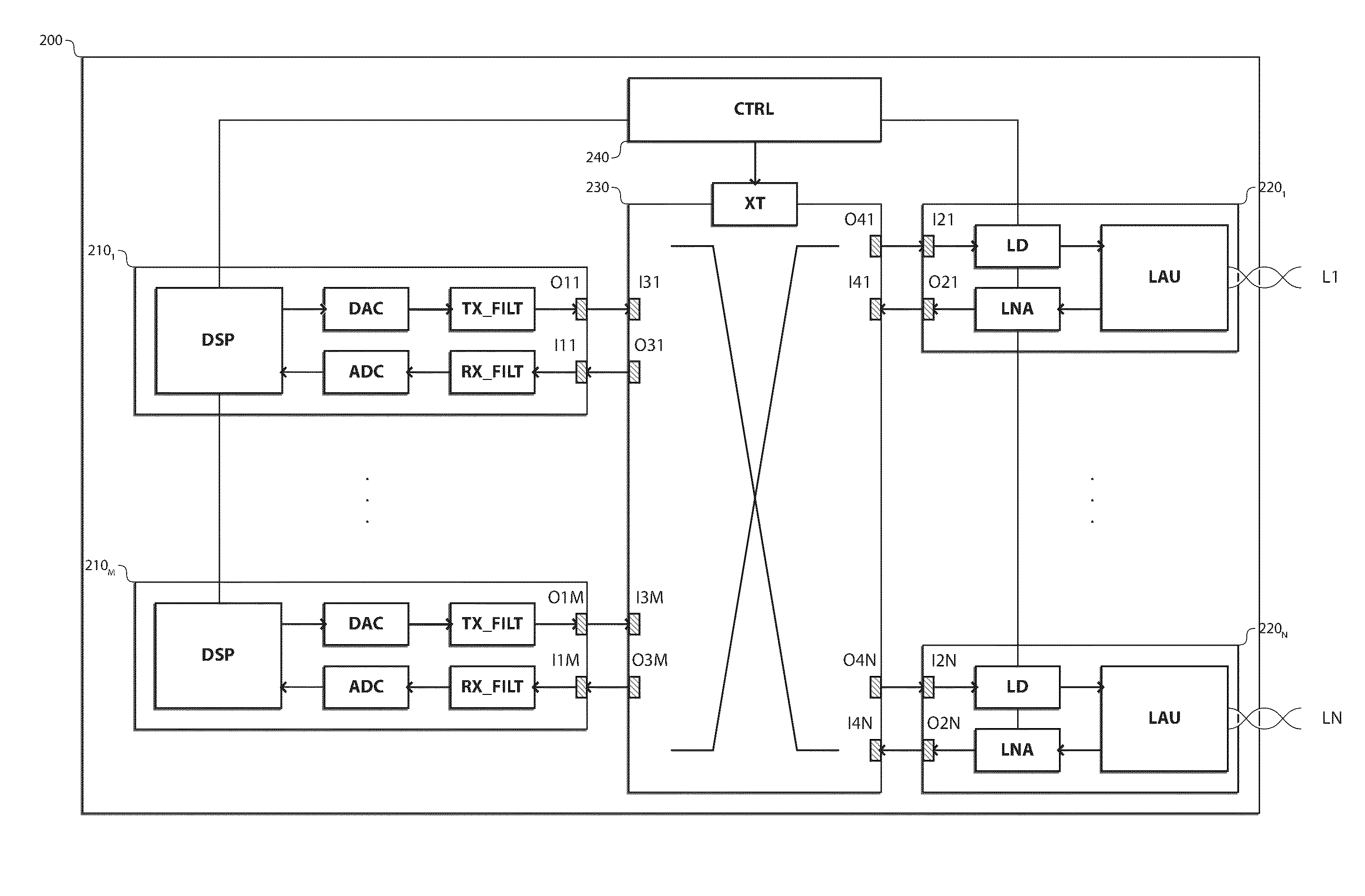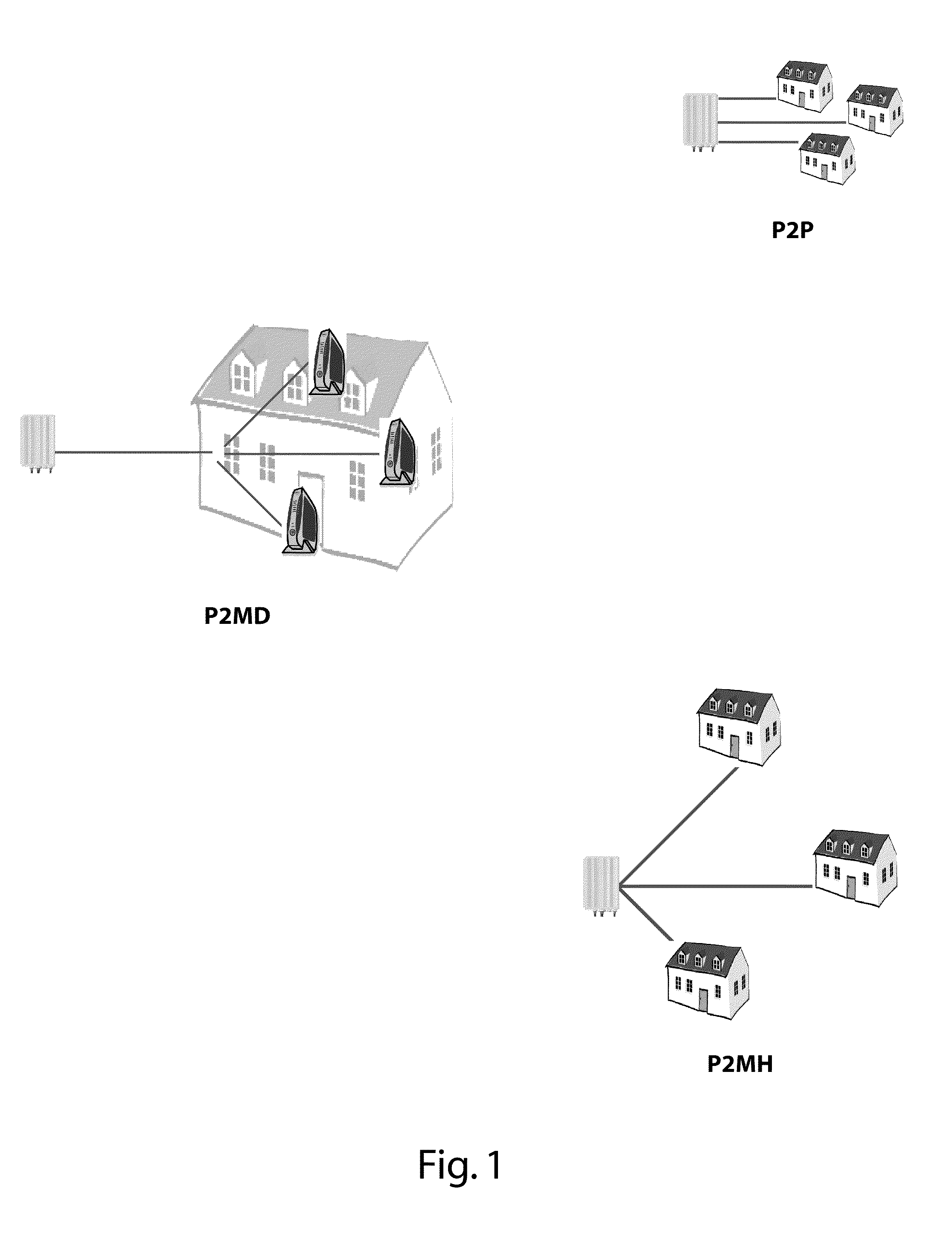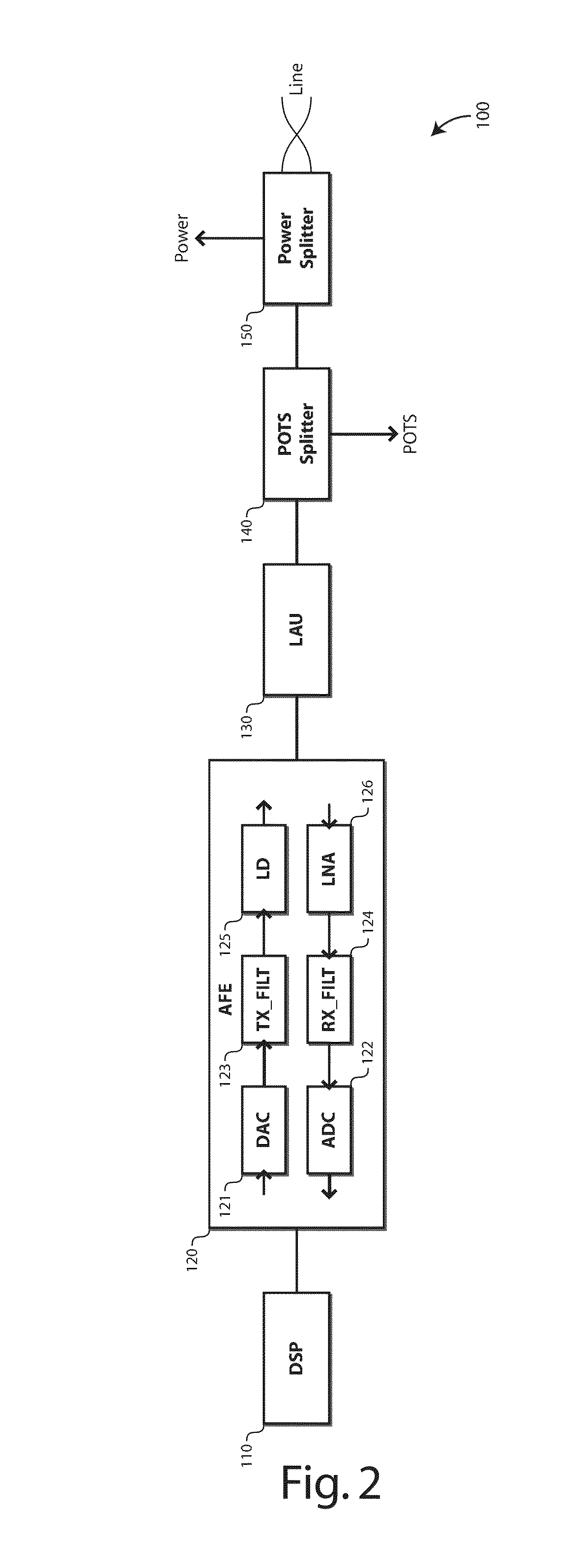Point-to-multi-point transmission over a wired loop plant
a wired loop plant and multi-point technology, applied in the field of next-generation copper access, can solve the problems of untraditional application of p2mp to such networks, inefficient in terms of transmit power, and further obstacles to efficient implementation of p2mp access networks, and achieve the effect of efficient consumption of power
- Summary
- Abstract
- Description
- Claims
- Application Information
AI Technical Summary
Benefits of technology
Problems solved by technology
Method used
Image
Examples
Embodiment Construction
[0026]There is seen in FIG. 1 three access topologies: Point-to-Point (P2P), Point-to-Multi-Devices (P2MD), and Point-to-Multi-Home (P2MH).
[0027][P2P] In the P2P use case, each subscriber is connected to a dedicated transceiver in the access node. Each subscriber has a single access network termination. This is the traditional approach in DSL (FIG. 1, top).
[0028]The advantage of this scheme is that each subscriber has its dedicated channel. This maximizes the capacity available for each subscriber and reduces the inter-dependencies between neighboring users. There is also a clear separation between the access and the in-home network, which allows a clear separation of management responsibilities.
[0029]One disadvantage is that a dedicated transceiver is required per end-user, with implications on access node size. Crosstalk is also a major issue. Crosstalk cancellation techniques, such as joint signal processing, can palliate this shortcoming.
[0030]Another disadvantage is that each s...
PUM
 Login to View More
Login to View More Abstract
Description
Claims
Application Information
 Login to View More
Login to View More - R&D
- Intellectual Property
- Life Sciences
- Materials
- Tech Scout
- Unparalleled Data Quality
- Higher Quality Content
- 60% Fewer Hallucinations
Browse by: Latest US Patents, China's latest patents, Technical Efficacy Thesaurus, Application Domain, Technology Topic, Popular Technical Reports.
© 2025 PatSnap. All rights reserved.Legal|Privacy policy|Modern Slavery Act Transparency Statement|Sitemap|About US| Contact US: help@patsnap.com



